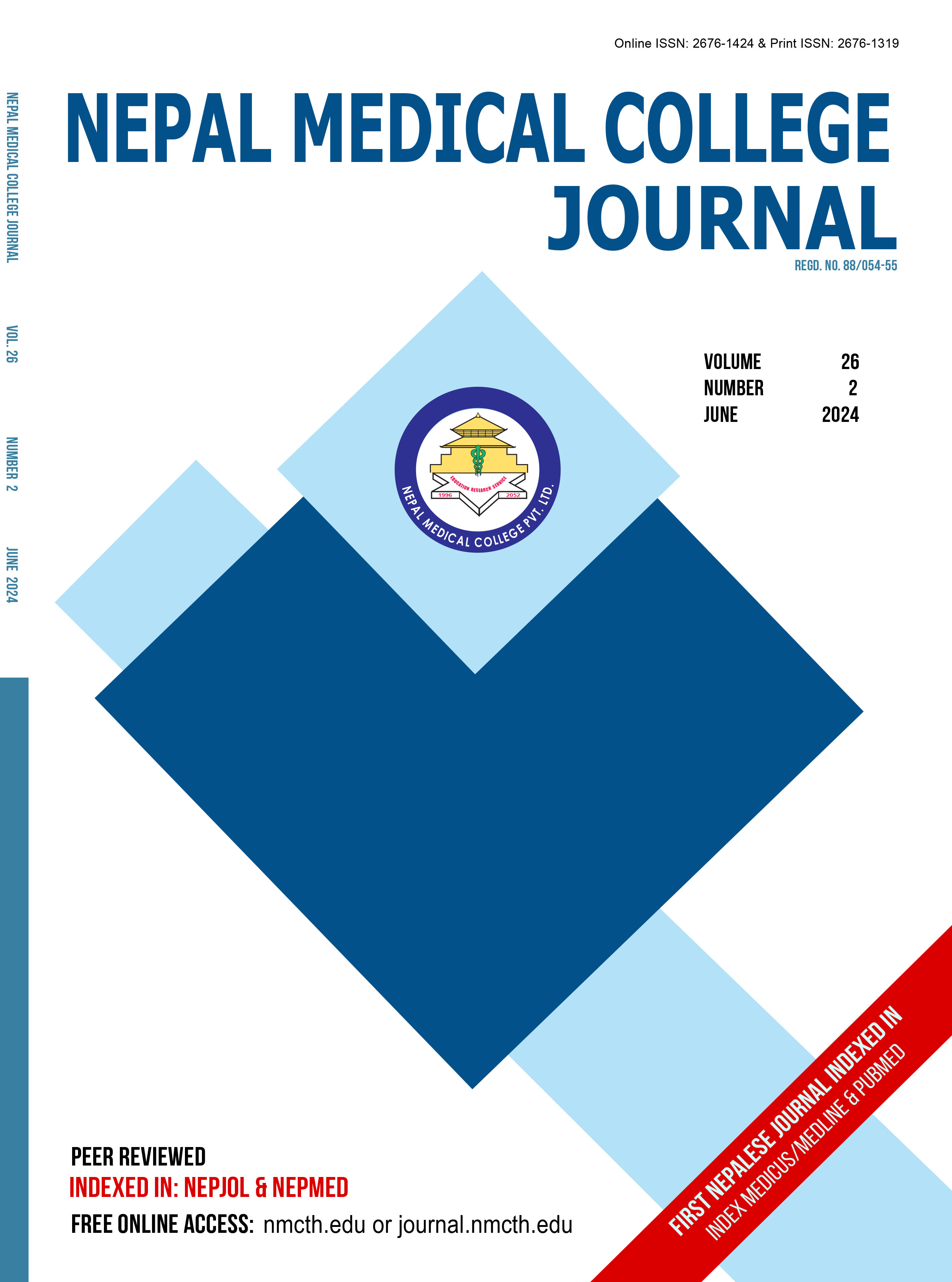Antibiotic Resistance Pattern of Bacteria Isolated from Clinical Specimens: A Hospital-Based Cross-sectional Study in Kathmandu, Nepal
DOI:
https://doi.org/10.3126/nmcj.v26i2.67202Keywords:
Antimicrobial resistance, clinical specimens, bacterial isolates, NepalAbstract
Antibiotics are vital in combating infectious diseases, yet their increasing use fosters resistance. Antimicrobial resistance (AMR) is rising in Nepal due to factors such as indiscriminate, inappropriate, and inadequate antibiotic usage. This study aims to explore the association between demographic factors and the prevalence of specific bacterial strains within the surveyed population. Additionally, it seeks to determine the antibiotic resistance patterns of these bacteria. Antibiotic susceptibility or resistance data were retrieved from the Medical Records Department (MRD) of the Manmohan Memorial Medical College and Teaching Hospital (MMMCTH) in Kathmandu. Samples from patients with certain types of bacterial infections were included, with 56 from sputum reports, 46 from urine, and 8 from blood samples out of 110 retrieved. Analysis revealed that sputum samples were mostly from older males, while urine samples were mostly from females. Yet, gender did not significantly influence bacterial presence across sample types. Overall, Escherichia coli was the most prevalent bacterium (74%), followed by Salmonella typhi (25%), Staphylococcus aureus (25%), and Klebsiella pneumoniae (23%) isolated from different type of clinical samples. Altogether, 6-15 antibiotics were assessed for sensitivity, with 2–6 antibiotics showing sensitivity to blood bacteria, 1-6 antibiotics demonstrating sensitivity to sputum bacteria, and 3–8 antibiotics exhibiting sensitivity to urine bacteria. Many investigated antibiotics were resistant, only gentamicin exhibited sensitivity for all types of bacteria found in blood, sputum and urine. These findings underscore the importance of discerning bacterial resistance patterns for effective antimicrobial treatment selection.
Downloads
Downloads
Published
How to Cite
Issue
Section
License
Copyright (c) 2024 Nepal Medical College Journal

This work is licensed under a Creative Commons Attribution 4.0 International License.
This license enables reusers to distribute, remix, adapt, and build upon the material in any medium or format, so long as attribution is given to the creator. The license allows for commercial use.




